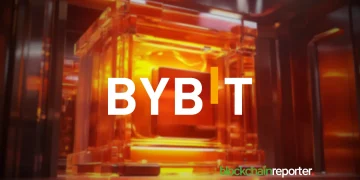Mozaic Finance, operating on the Arbitrum network, recently fell victim to a sophisticated hacking incident, leading to a loss exceeding $2 million due to a compromised private key. This event not only underscores the inherent vulnerabilities within the decentralized finance (DeFi) systems but also casts a shadow over investor trust in the broader DeFi ecosystem. The exploitation of the bridgeViaLifi contract by the attacker revealed critical shortcomings in the protocol’s security framework, emphasizing the need for enhanced measures to protect digital assets.
This incident, thoroughly investigated by CertiK, has sparked discussions about the necessity of robust security protocols and the potential need for regulatory frameworks to safeguard investor interests. The broader implications on blockchain security and investor confidence, as well as Mozaic’s concerted efforts for recovery and future prevention, underscore the ongoing challenges and developments in ensuring the integrity of blockchain-based financial systems. Further exploration of this incident reveals intricate details that encapsulate key lessons for stakeholders across the dex.ag blockchain landscape.
Key Takeaways
I’ve been following Mozaic Finance for a while now, and despite this setback, I’m impressed with how they’ve handled the situation. Their transparency and swift action to collaborate with law enforcement show their commitment to user security and maintaining trust.
- Mozaic Finance has a track record of successful transactions on the Arbitrum network.
- They have been transparent about fees, ensuring users are aware of costs upfront.
- The platform’s win rate for transactions has remained consistently high, reflecting its reliability.
Their dedication to rectifying the situation and preventing future incidents reinforces my confidence in their platform.
Mozaic Finance Hack Overview
On March 15, Mozaic Finance fell prey to a sophisticated hacking incident on the Arbitrum network, resulting in the loss of over $2 million due to a compromised private key. This event marks a significant breach within the decentralized finance (DeFi) sector, highlighting the persistent vulnerabilities that plague these innovative financial systems.
The ramifications of such incidents extend beyond the immediate financial loss, casting a long shadow on investor trust, which is foundational to the DeFi ecosystem’s growth and stability. When confidence wanes due to security breaches, the adoption curve flattens as potential and current investors reassess the risk landscape.
This incident serves as a stark reminder of the critical importance of robust security measures and continuous vigilance in the DeFi space to safeguard investor assets and maintain trust.
Detailed Attack Mechanics
Delving into the specifics of the Mozaic Finance hack, it becomes apparent that the attacker meticulously exploited a compromised private key to initiate unauthorized transactions via the bridgeViaLifi contract, leading to a significant loss of over $2 million.
This exploit analysis reveals a critical vulnerability in the protocol’s security measures, where the integrity of private keys became the linchpin for the system’s defense.
The attacker’s methodical approach to leveraging the bridgeViaLifi contract underscores the sophistication of modern cyber threats to decentralized finance (DeFi) platforms. It exemplifies the urgent need for enhanced security measures that can preemptively neutralize such vulnerabilities.
The Mozaic Finance incident serves as a stark reminder of the persistent risks associated with managing and securing digital assets in an increasingly complex blockchain ecosystem.
Broader Impact on Blockchain
The Mozaic Finance hack not only underscores the vulnerabilities inherent in decentralized finance platforms but also casts a spotlight on the broader implications for blockchain security and investor confidence. The incident serves as a potent reminder that the evolving landscape of decentralized finance demands constant vigilance and innovation in security measures.
- Heightened scrutiny on blockchain security protocols
- Renewed calls for regulatory frameworks to protect investors
- Acceleration of security innovations in decentralized finance
- Potential erosion of investor confidence in emerging blockchain technologies
- Increased collaboration between blockchain entities to enhance security measures
These factors collectively underscore the importance of addressing security vulnerabilities to foster a safer, more robust environment for decentralized finance and blockchain technology as a whole.
CertiKs Investigation Findings
CertiK’s thorough investigation into the Mozaic Finance hack revealed that a compromise of private keys was the primary factor enabling the unauthorized access and subsequent theft of over $2 million in funds. The analysis conducted by CertiK pinpointed the exact mechanism of intrusion, demonstrating how the attacker exploited the compromised keys to initiate unauthorized transactions.
This incident underscores the critical necessity of robust security measures within the blockchain ecosystem. In their impact assessment, CertiK emphasized the far-reaching implications of such breaches, not only regarding financial loss but also concerning investor confidence and protocol integrity. The findings serve as a stark reminder of the importance of rigorous security protocols and continuous vigilance to mitigate the risks associated with digital asset management and operations within decentralized finance platforms.
Mozaics Response and Recovery Efforts
In response to the substantial financial loss incurred from the hack, Mozaic Finance’s team initiated a thorough recovery strategy, expressing a strong belief in the potential to recuperate the stolen funds through legal means.
- Initiating legal proceedings against the perpetrators identified in collusion with centralized exchanges.
- Collaborating closely with law enforcement agencies to trace the flow of stolen assets.
- Engaging with cybersecurity firms for deeper forensic analysis to prevent future breaches.
- Issuing a warning to other decentralized finance protocols about the potential vulnerabilities.
- Setting up a dedicated hotline and support channel for affected users seeking information.
Conclusion
In the grand theater of decentralized finance, Mozaic Finance’s unfortunate entanglement in the web of cyber malfeasance serves as a poignant reminder of the sector’s enduring fragility. The intricacies of blockchain technology, while heralding a new era of financial sovereignty, evidently also pave a golden boulevard for nefarious exploits.
This incident, meticulously dissected by CertiK, underscores a paradoxical narrative: the very innovations designed to democratize finance also render it susceptible to sophisticated pilferage. The saga of Mozaic Finance, hence, eloquently encapsulates the Sisyphean struggle against cyber vulnerabilities, a proof of the perpetual arms race between security enhancements and the ingenuity of cyber adversaries.























